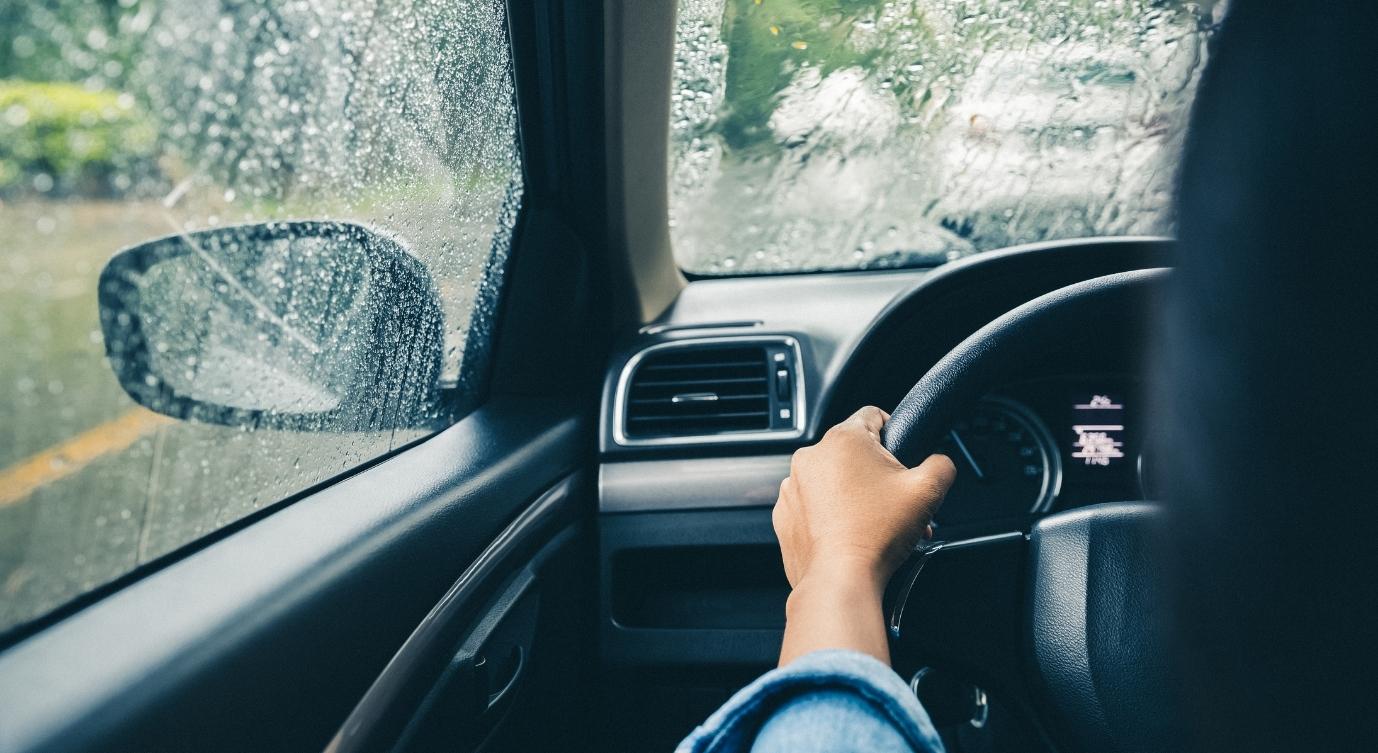Driving in heavy rain presents numerous challenges and risks, especially on Ireland's often narrow and winding roads. Ensuring safe driving practices during these conditions is crucial for protecting yourself, your passengers, and other road users.
This guide provides practical advice and essential tips for driving safely in heavy rain, highlighting the importance of preparedness and caution. Rain is something you become quickly used to in Ireland, but driving in heavy rainfall is something that takes specific care and attention.
What Challenges Does Heavy Rain Present for Drivers in Ireland?
Heavy rain can transform driving conditions, making roads more hazardous and increasing the likelihood of accidents. Understanding the specific challenges posed by heavy rain can help drivers take appropriate precautions.
1. Wet and Slippery Roads
Wet and slippery roads are a significant danger during heavy rain. Water on the road surface reduces tyre traction, making it easier for vehicles to skid. This reduced traction also increases braking distances, meaning that stopping your car takes longer than usual. Driving more slowly and cautiously to account for these conditions is essential.
2. Reduced Visibility
Heavy rain can severely impact visibility, making it difficult to see other vehicles, road signs, and hazards. Rain can obscure your view of the road, and water splashing from other vehicles can make the situation worse. To improve visibility, use your windshield wipers effectively and keep your headlights on to help you see and be seen by other drivers. In these situations, take it slow and go at whatever speed you feel safe and comfortable.
3. Hydroplaning
Hydroplaning occurs when a layer of water builds up between your vehicle's tyres and the road surface, causing a loss of traction and complete control. To prevent hydroplaning, reduce your speed and avoid sudden manoeuvres. You’ll also want to ensure your tyres are in good condition with adequate tread depth.
4. Strong Winds
Heavy rain is often accompanied by strong winds, which can further complicate driving. These winds can affect your vehicle's stability, making it harder to maintain control, especially for high-sided vehicles like vans and trucks. Be prepared for sudden gusts, and keep both hands on the steering wheel to maintain control.
5. Flash Flooding
Flash flooding can occur during heavy rain, posing a serious driver risk. Floodwaters can be deceptively deep and hide hazards like debris or potholes. It's crucial to recognise and avoid flooded areas whenever possible. If you encounter a flooded road, it's often safer to turn around and find an alternative route rather than attempting to drive through the water.
What Safety Tips Should You Follow When Driving in Rainy Weather?
Driving in rainy weather requires extra caution and preparation. Here are some practical safety tips to help you navigate wet conditions safely.
Check the Weather Forecast
Before setting out on a journey, always check the weather forecast. This will help you anticipate heavy rain and prepare accordingly. Plan your travel to avoid the worst weather conditions or allow extra time for your journey.
Traverse Flooded Areas Safely
If you must drive through a flooded area, proceed with caution. Assess the water depth first—if the water is deeper than the bottom of your car doors, do not attempt to cross. Drive slowly and steadily through shallow water and be mindful of creating waves that can splash into your engine or cause other issues. Stay in a low gear and test your brakes after you emerge. Do not stop in a flooded area unless the vehicle won't move.
Maintain a Safe Following Distance
Increase the distance between your vehicle and the one in front of you. On wet roads, it's advisable to maintain a following distance of at least four seconds. This extended distance allows more time to react and stop if the vehicle ahead brakes suddenly.
Use Headlights and Fog Lights Appropriately
Turn on your headlights whenever you drive in heavy rain, even during the day, to improve visibility. In extremely poor visibility, use your fog lights. However, remember to turn off fog lights when visibility improves to avoid dazzling other drivers.
Ensure Wipers and Tires are in Good Condition
Check your windshield wipers and tyres regularly to ensure they are in good condition. Replace wiper blades that leave streaks or do not clear the windshield effectively. Check tyre tread depth and pressure regularly; good tyres are crucial for maintaining traction on wet roads.
Irish regulations state that the central three-quarters of the tread pattern on tyres must be greater than 1.6 mm to be road-legal, while pressure depends on the make and model of your vehicle.
5 Essential Tips to Help Maintain Vehicle Control in Heavy Rain
Maintaining control of your vehicle is crucial when driving in heavy rain. Here are five essential tips to help you stay safe:
1. Reduce Your Speed
Slowing down is one of the most important things you can do when driving in heavy rain. Lower speeds improve tire traction and reduce the risk of hydroplaning. Driving slowly also gives you more time to react to potential hazards.
2. Increase Your Following Distance
Reinforce the need to increase your following distance to allow for safe braking and to avoid collisions. Wet roads require longer stopping distances, so maintaining extra space between vehicles is essential for safety.
3. Avoid Sudden Movements
Avoiding sudden movements, such as sharp turns or abrupt braking, is crucial for maintaining vehicle stability on wet roads. Smooth and gradual actions help keep your tyres in contact with the road, reducing the risk of skidding.
4. Use Anti-Lock Brakes Properly
Anti-lock brakes (ABS) can help prevent skidding and maintain steering control during emergency stops. To use ABS correctly, apply firm and continuous pressure on the brake pedal. Do not pump the brakes, as the ABS system is designed to modulate brake pressure automatically.
5. Turn Off Cruise Control
In heavy rain, turn off cruise control to maintain complete control over your vehicle's speed and response. Using cruise control in wet conditions can increase the risk of hydroplaning because it keeps the vehicle moving at a constant speed regardless of road conditions.
Stay Safe on Wet Roads with 123.ie
Driving in heavy rain presents several challenges that require careful attention and adaptation. Understanding the risks and adopting safe driving practices can significantly reduce the likelihood of accidents and ensure a safer driving experience. Always be prepared for adverse weather conditions, maintain your vehicle correctly, and drive cautiously when the circumstances require it.
However, we can never account for everything, and accidents do happen. Comprehensive motor insurance is essential for peace of mind and financial protection when driving in adverse weather conditions. Car Insurance with 123.ie offers reliable coverage and support, ensuring you are well-protected in challenging driving situations like heavy rain. Stay safe, take it slow - have the best possible protection behind you.





